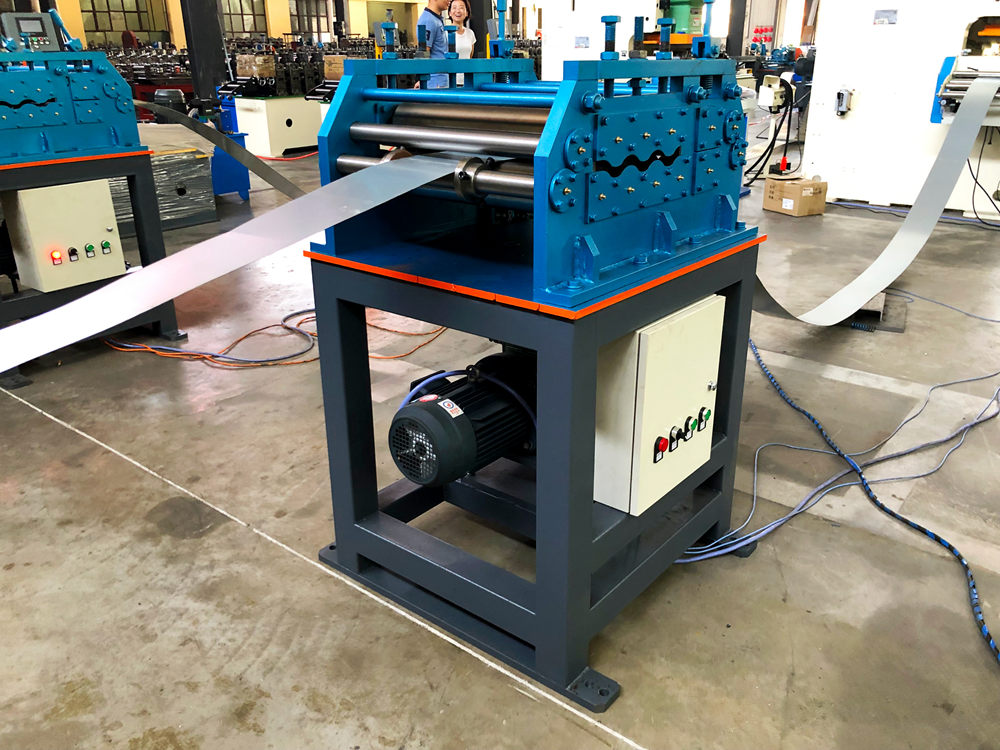
The Importance of Servo Control in Feeding, Storage, and Racking Forming Machines
In the ever-evolving landscape of manufacturing and industrial automation, precision and efficiency have become paramount. One of the significant advancements contributing to these objectives is the integration of servo control technology in feeding, storage, and racking forming machines. This article delves into the advantages and functionalities of servo control systems and how they enhance the operational capabilities of these machines.
Understanding Servo Control Technology
Servo control technology refers to the use of feedback loops to control the position, velocity, and acceleration of a machine. It typically involves a motor, sensor, and controller, working in unison to deliver precise movements and operations. Unlike traditional control methods, which often rely on open-loop systems and may suffer from inaccuracies due to varying loads or wear, servo systems provide real-time feedback and adjustment, ensuring optimal performance.
Application in Feeding Systems
In manufacturing, feeding systems play a crucial role by delivering raw materials or components to production lines efficiently. Servo control facilitates the smooth and precise movement of materials from one point to another. For instance, in a racking forming machine, servo-driven feed mechanisms can adjust the speed and position of materials based on real-time demands. This adaptability helps minimize waste and reduces downtime, leading to increased productivity.
Moreover, servo-controlled feeding systems can handle a variety of materials with different weights and dimensions without the need for extensive mechanical adjustments. This flexibility is invaluable in industries where multiple products are manufactured on the same line, allowing companies to respond swiftly to changing market demands.
Enhanced Storage Solutions
In the context of storage and inventory management, servo control plays a pivotal role in optimizing space utilization and streamlining processes. Automated storage and retrieval systems (AS/RS) that utilize servo technology can operate with remarkable speed and accuracy. These systems rely on servo motors to move cartesian robots or shuttles, which retrieve or store items in designated locations within a warehouse or storage facility.
The precision of servo motors ensures that items are handled gently, reducing the risk of damage. Additionally, AS/RS can be designed to navigate complex racking configurations, maximizing vertical space and improving overall warehouse efficiency. This capability is particularly beneficial in industries where space is at a premium, such as e-commerce and manufacturing, as it allows for higher inventory turnover and better resource allocation.
Racking Forming Machines

Racking systems are essential components in many industries, providing the necessary structure to support products during storage and transportation. Racking forming machines, which create the components of these racking systems, benefit greatly from servo technology. The precision involved in forming shapes, such as beams and supports, directly impacts the structural integrity of the racks.
By employing servo-controlled mechanisms, racking forming machines can execute intricate designs with high accuracy. This level of control ensures that the resulted components meet the exact specifications required for safety and functionality. Additionally, the speed at which these machines operate can be finely tuned to match the production needs, thus maintaining a balance between quality and throughput.
Benefits of Servo Control
The integration of servo control technology in feeding, storage, and racking forming machines brings several benefits
1. Increased Precision The feedback loops allow for far greater accuracy in movement, reducing errors and improving product quality.
2. Enhanced Efficiency Automated adjustments based on real-time data lead to faster operations and more efficient use of resources.
3. Flexibility The ability to quickly adapt to varying production requirements makes servo systems ideal for modern manufacturing environments.
4. Cost Savings By reducing waste, downtime, and minimizing maintenance needs, companies can see significant cost reductions in the long term.
5. Improved Safety Automating processes with precise control can decrease the risk of accidents associated with manual handling and operation.
Conclusion
As industries continue to embrace automation and seek ways to optimize their operations, servo control technology stands out as a pivotal component in feeding, storage, and racking forming machines. With its ability to enhance precision, efficiency, and flexibility, servo control not only meets the demands of modern manufacturing but also sets the stage for future innovations. As we look ahead, the significance of this technology will undoubtedly grow, shaping the way we approach manufacturing processes across various sectors.